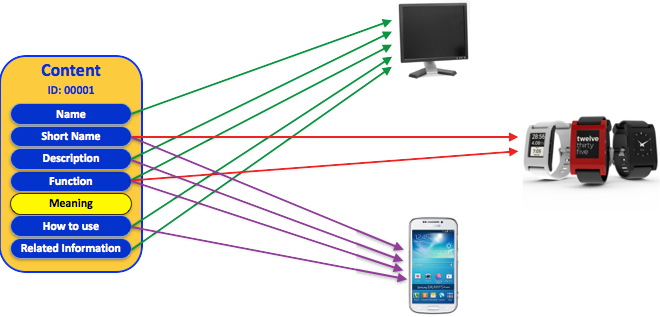The content strategy of things
This post is a recap of the presentation I delivered at Localization World Berlin on June 4, 2015. It describes how and why to adapt a content strategy in support of The Internet of Things. The presentation slides are available on SlideShare.
What is the content strategy of things? To simplify definitions, content strategy is the planning for and governance of the content lifecycle, and the Internet of Things is the connecting of devices and software to provide greater value. To adapt content strategy to the Internet of Things, the content strategy of things can be defined as the planning for and governance of connected content to provide greater value.
As with any content strategy, proper planning is critical. All parties involved in hardware, software, and content must be involved. A shared understanding of the associated systems and the people using them is required. And since these connected devices, systems, and people could be anywhere, localization and cultural understanding is critical.
When we think of content, minimum viable content for consumption must be accurate, concise, and complete. This means it must exist and be available when needed, that it is factually correct, and that it is appropriate for the audience (in the proper language and format).
However, content that supports the Internet of Things cannot stop there. Since device and systems communication involves fragments of information being passed as needed, the content that supports this communication must also conform to this fragmented model. To engage users and talk between devices and contexts, content must be intelligent.
Intelligent content is structurally and semantically rich, reusable, reconfigurable, and adaptable. Content can stand alone as small snippets of information or be combined into longer blocks of information. And since it is XML-based, it can be transformed into any format required.
There are many models that support intelligent content, but one that stands out is the SNOMED CT model. In this content model, every concept gets a unique ID and contains multiple human-readable descriptions and relationships.
SNOMED is probably the best example that explains how content needs to work in order to support the Internet of Things. Rather than think in terms of independent topics, we need to start thinking in terms of contextual topic families. A family could consist of short and long entries for feature names and descriptions, and could contain many other types of topics depending on the types of information needed. Depending on the device and purpose of the content, only certain topics from that family would be requested and presented.
While we currently lack governance over human-facing content in the Internet of Things, moving to such a model would allow for a nimble transition to a future standard, and would continue to suit more traditional content deliverables.
If you would like to learn more about modeling content in this manner, you can contact us or leave a comment below.





One comment on “The content strategy of things”